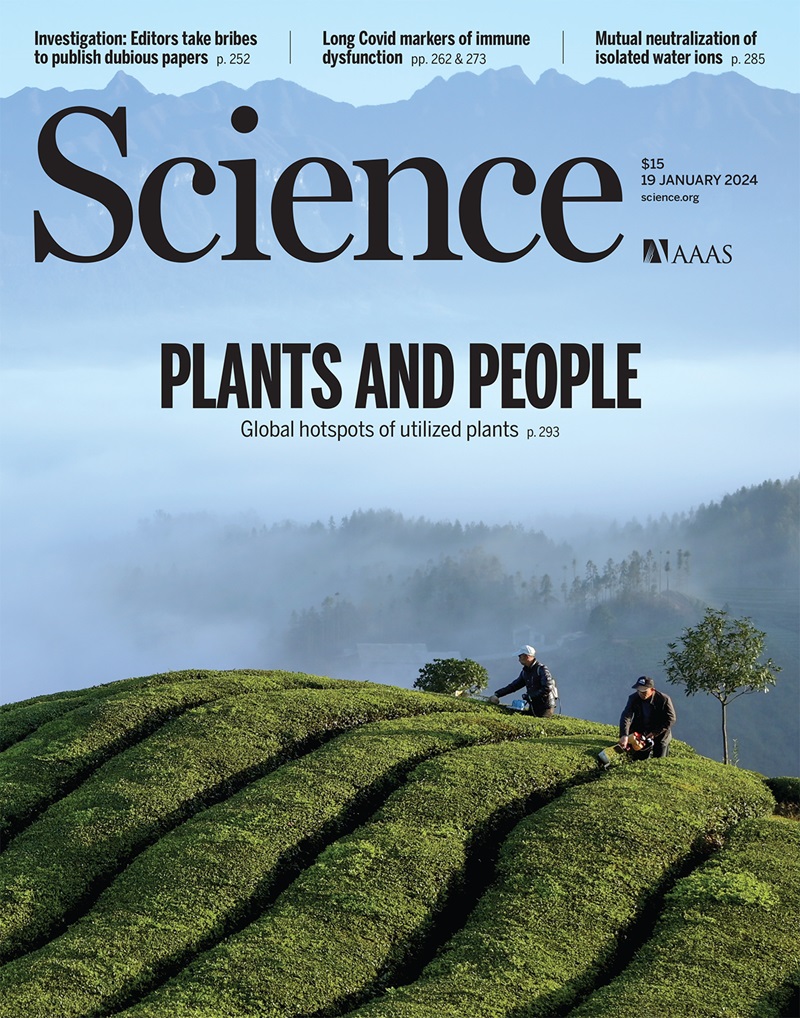应变耦合,晶体聚合物-无机界面高效磁电传感
IF 45.8
1区 综合性期刊
Q1 MULTIDISCIPLINARY SCIENCES
引用次数: 0
摘要
磁电传感有望用于柔性传感器,以最小的功耗提供对电场和磁场的精确检测。然而,它的实际应用受到弱磁电效应和有限的整体性能的限制,特别是在机械应变下。在此,我们通过界面共结晶策略制备了坚固的磁电聚合物-无机纳米复合材料。通过利用二硒化钒(VSe 2)单层上的重氮化学,我们在铁磁性VSe 2和铁电聚偏氟乙烯(PVDF)纳米晶体之间创建了亚分子平面界面。这种高度结晶的界面具有很少的可移动聚合物链,从而限制了能量耗散并增强了界面能量传递。该可伸缩复合薄膜具有优异的磁电性能,其磁容系数为23.6%。这些薄膜实现了超快磁电检测,与传统传感器相比,速度提高了近10倍,并为将多功能材料(如热电冷却器)集成到可穿戴设备中提供了机会。本文章由计算机程序翻译,如有差异,请以英文原文为准。
Strain-coupled, crystalline polymer-inorganic interfaces for efficient magnetoelectric sensing
Magnetoelectric sensing holds promise for flexible sensors, offering precise detection of both electric and magnetic fields with minimal power consumption. However, its practical use has been constrained by weak magnetoelectric effects and limited overall performance, particularly under mechanical strain. Herein, we fabricated robust magnetoelectric polymer-inorganic nanocomposites through an interfacial cocrystallization strategy. By leveraging diazonium chemistry on vanadium diselenide (VSe 2 ) monolayers, we created a submolecular-flat interface between ferromagnetic VSe 2 and ferroelectric poly(vinylidene fluoride) (PVDF) nanocrystals. This highly crystalline interface has few mobile polymer chains and thus limits energy dissipation and enhances interfacial energy transfer. The scalable composite films show exceptional magnetoelectric performance, with a magnetocapacitive coefficient of 23.6%. These films enable ultrafast magnetoelectric detection, approaching a 10-fold increase in speed compared with conventional sensors, and offer opportunities for integrating multifunctional materials such as thermoelectric coolers into wearable devices.
求助全文
通过发布文献求助,成功后即可免费获取论文全文。
去求助
来源期刊

Science
综合性期刊-综合性期刊
CiteScore
61.10
自引率
0.90%
发文量
0
审稿时长
2.1 months
期刊介绍:
Science is a leading outlet for scientific news, commentary, and cutting-edge research. Through its print and online incarnations, Science reaches an estimated worldwide readership of more than one million. Science’s authorship is global too, and its articles consistently rank among the world's most cited research.
Science serves as a forum for discussion of important issues related to the advancement of science by publishing material on which a consensus has been reached as well as including the presentation of minority or conflicting points of view. Accordingly, all articles published in Science—including editorials, news and comment, and book reviews—are signed and reflect the individual views of the authors and not official points of view adopted by AAAS or the institutions with which the authors are affiliated.
Science seeks to publish those papers that are most influential in their fields or across fields and that will significantly advance scientific understanding. Selected papers should present novel and broadly important data, syntheses, or concepts. They should merit recognition by the wider scientific community and general public provided by publication in Science, beyond that provided by specialty journals. Science welcomes submissions from all fields of science and from any source. The editors are committed to the prompt evaluation and publication of submitted papers while upholding high standards that support reproducibility of published research. Science is published weekly; selected papers are published online ahead of print.
 求助内容:
求助内容: 应助结果提醒方式:
应助结果提醒方式:


